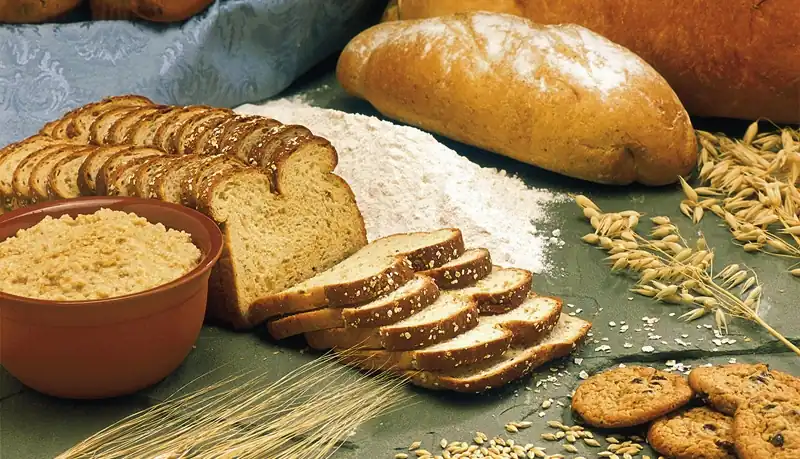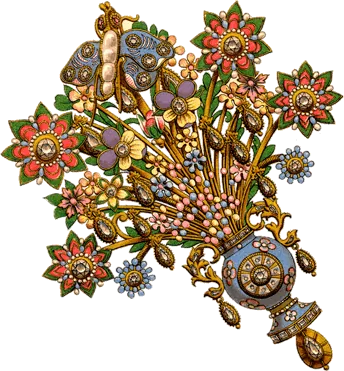With spring just around the corner, Passover is fast approaching! It’s time to start thinking about getting our homes ready for Passover!
One of the tasks of cleaning the house prior to Passover is the removal of all leaven from the home.
Although the search is spiritually significant and symbolizes our personal cleansing from sin, the practical application of cleaning the home can prove to be a daunting task for those who are uncertain about some of the dietary restrictions surrounding Passover. [For more on the symbolism of Passover see Article Passover Lamb.]
The questions people often ask go as follows: What exactly qualifies as leaven? What am I supposed to purge from my home? Does this item contain yeast in it? What about my baking soda!?
In reality, the concept for determining what is acceptable and not acceptable for consumption on Passover is quite simple; and it is the purpose of this article to address those concerns and to educate the reader on the basics of enjoying a kosher Passover.
The Big 3
In the Torah, we read the following from Exodus 12:15 (NIV):
For seven days you are to eat bread made without yeast. On the first day remove the yeast from your houses, for whoever eats anything with yeast in it from the first day through the seventh must be cut off from Israel.
According to most of our English translations, it is evident that the Children of Israel are commanded to remove all the yeast from their homes on the first day of Passover.
If taken literally, that means just getting rid of all the boxes and canned goods in your home with the word “yeast” listed in the ingredients should suffice. This seems easy enough! However, have you ever considered how it is possible to drink wine on Passover?
Believe it or not, all wines (to include kosher for Passover wines) require some sort of mold (yeast) for fermentation. If wine is fermented with yeast, it begs the obvious question: How was Yeshua and his disciples able to drink wine at their Seder when yeast is forbidden on Passover? This is where modern translations and unfamiliarity with the Hebrew language has led to some confusion and uncertainty on the matter. Suffice it to say, yeast is not a very good translation.
So what is exactly is meant in our Bibles when we read, ‘no yeast in the home’? The answer lies in the Torah’s word for “yeast” in passages such as Exodus 12:15.
When reading the same passage in Hebrew, the Torah says something quite different. Let’s read the same verse from the Artscroll translation, while transliterating the key terms from Hebrew, and see what it says:
For a seven-day period you shall eat matzot, but on the previous day you shall nullify the se’or from your homes; for anyone who eats chametz – that soul shall be cut off from Israel, from the first day to the seventh day.
From the passage, we learn three things:
- We are commanded to eat Matzot (plural for Matzah)
- We are to rid our homes of Se’or
- We are forbidden to eat Chametz
Generally speaking, most of us are familiar with Matzah – that thin, crisp unleavened bread that we eat at Passover. But what exactly is Se’or and Chametz?
What is Chametz?
The ingredient that the Torah forbids from consumption on Passover is called Chametz. As you may have suspected by now, Chametz is not yeast.
Chametz is any fermented food that contains one of the following five grains: Wheat, Barley, Oats, Spelt, or Rye.
When mixed with water, these grains begin to ferment, and become Chametz. As a general rule, this process can begin in as little as 18 minutes.
Understanding this should make cleaning the kitchen easier for Passover: Chametz is the result of letting grain sit with water for more than 18 minutes. Therefore, items such as baking soda and leavening agents are irrelevant and don’t have to be removed from ones home, unless they are made from fermented grain of course.
That being said, the obvious foods such as breads, cakes, pastries, tortillas, pasta, cookies, crackers, pretzels, breaded foods, etc. are not kosher for Passover; and must be consumed, donated, or disposed before Passover.
It is also worth noting that flour is considered chametz as well. The reason being that it is common practice to temper the wheat kernels with water for many hours before wheat is ground into flour. Again: Grain + Water + Time = Chametz.
This attributes to the main difference between ordinary matzah, and matzah that is made especially for Passover: Matzah that isn’t baked especially for Passover is made from tempered wheat and is therefore considered chametz, and not kosher for Passover.
Understanding chametz will help explain why wine is permitted on Passover, even though it contains yeast: Simply put, wine that is kosher for Passover is made from a mold that has not been grown on bread (such as sugar or fruit).
It is important to note however, that it is still necessary to check the label on a bottle when purchasing wine for Passover. If the bottle does not have a ‘P’ or say “Kosher for Passover”, it was more than likely fermented from a mold that grew on bread.
What is Se’or?
The Torah says that one may not own Se’or on Passover. But what is Se’or? And if chametz isn’t yeast, then are Se’or and yeast the same thing?
Se’or is in fact yeast. However, you might be surprised to find out that yeast isn’t always se’or.
To explain this, let’s demonstrate this fact through a quick lesson in bread baking:
As we established above, when a grain soaks in water for 18 minutes or longer it becomes chametz. However, in order to make good bread one needs yeast.
Yeast is a natural occurring, living microorganism which exists everywhere. Even the air we breathe contains yeast! When grain and water are used to make a batter and left unbaked and exposed to the air, yeast automatically converts some of the flour into carbon dioxide; which puffs the batter up and causes the dough to rise.
The Apostle Paul (Rav Shaul) alludes to this process in 1 Corinthians 5:6 when he says, “Don’t you know that a little yeast leavens the lump?”
While yeast from the atmosphere will automatically find its way into a batter of dough, most bakers don’t have the patience to wait all day for their bread to rise, so they add their own yeast into the batter to speed things up. The agent used for the speeding process is what the Torah refers to as se’or.
How to Make Se’or
In ancient times, dough was leavened by adding a starter dough left over from the last batch of bread, much the same way that sourdough bread is made today.
Every day, before baking the dough, the baker would take one handful of dough out of the batter and set it aside. As the day went on, the yeast in that dough would multiply and be joined by other yeast found in the air. This batter would in-turn become sour and inedible.
The next day, the ball of concentrated yeast that was set aside from the previous batch would be thrown into the new batter to help that batter rise as well. And then a handful of that batter would be taken out to be saved for the next day. And the process would be repeated all over again. Over time, a culture of yeast was passed on from one loaf to another, and on to the next, from loaf to loaf to loaf. In English this concentrated yeast-ball is called “sourdough” due to its awfully-sour taste, and this is what the Torah calls se’or and forbids one from owning on Passover.
So, the moral of the story is that if you’re intent on keeping Passover and you own a bakery or you bake bread at home, get rid of your concentrated yeast and starter dough, it’s se’or.
The Conclusion
Now that we understand what se’or is, we should be able to understand why not all yeast is considered se’or. As we mentioned earlier, some forms of yeast are permissible on Passover. For example, one can also collect yeast from plant sources and produce it via fermentation. After all, yeast is what is used to ferment wine. If yeast doesn’t contain any ingredients from the five grains, wheat, barley, oats, spelt, or rye (as it often doesn’t) then it isn’t chametz.
In short: Don't eat the Chametz, but eat the Matzot! And don't even think about holding on to the Se'or!
The Symbolism of Chametz & Se’or
The search for Chametz symbolizes our personal cleansing of home and body from sin. Just as we carefully clean our homes to remove any se’or or chametz and we do not spare even the smallest crumb, so too we should search our hearts, deeds and words for any sinful act or attitude which must be removed. Paul writes,
"Don't you know that a little yeast works through the whole batch of dough? Get rid of the old yeast that you may be a new batch without yeast--as you really are. For Messiah, our Passover lamb, has been sacrificed. Therefore let us keep the Festival, not with the old yeast, the yeast of malice and wickedness, but with bread without yeast, the bread of sincerity and truth." (1st Corinthians 5:6-8)
As we search our homes for chametz and our lives for spiritual chametz, we should be reminded that we are preparing to come to the Master's table. Paul referred to this when he said,
"Whoever eats the bread or drinks the cup of the Lord in an unworthy manner will be guilty of sinning against the body and blood of the Lord. A man ought to examine himself before he eats of the bread and drinks of the cup." (1 Corinthians 11:27,28).
In the same way, we carefully search our homes, we must also carefully search our hearts.


